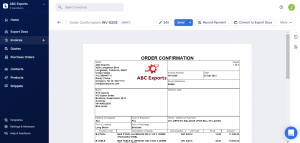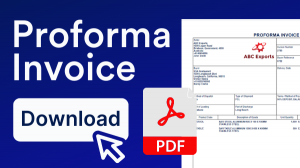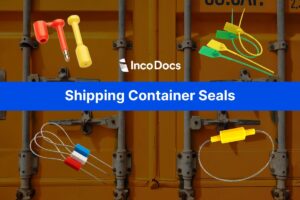Why Comparing Quotations Are Critical in Global Trade
Global trade connects markets around the world, allowing businesses to source products from different countries. This system has many benefits but also comes with challenges like different regulations, customs rules, and shipping issues. Each step, from negotiation to delivery, needs careful handling to avoid problems and extra costs.
Comparing quotations from suppliers is key to managing these challenges and optimizing landed costs. Quotations, often received through a Request for Quotation (RFQ) show prices, delivery times, product details, and payment methods. By comparing these quotes carefully, businesses can find the best deals. This helps control costs and ensure smooth operations in global trade.
Components of a Quotation in Global Trade
When assessing a quotation, it’s crucial to understand its key components. These elements help in making informed decisions and managing costs effectively. Let’s explore these components in detail.
- Seller & Buyer Information: Accurate details about the seller and buyer are essential. This includes names, addresses, and contact information. Clear identification of both parties ensures smooth communication and legal clarity.
- Incoterms and Place: Incoterms® define the responsibilities of buyers and sellers in international trade. They impact cost and risk by specifying who handles shipping, insurance, and duties. Knowing the place of delivery is also important for planning logistics.
- Ports of Loading and Discharge: The ports where goods are loaded and unloaded are crucial. They affect shipping routes, delivery times, and costs. Choosing the right ports can optimize your supply chain and reduce delays.
- Product Details and HS/HTS Codes: Detailed product descriptions, including HS/HTS codes, are necessary for compliance and accurate cost assessment. These codes help classify goods for customs and taxes, ensuring proper documentation and avoiding legal issues.
- Shipment Type and Packaging: Different shipment types, such as Full Container Load (FCL) or Less than Container Load (LCL), have various cost implications. Packaging details, like weight and volume, also affect shipping costs and handling requirements.
- Lead Time and Delivery Schedules: Balancing cost with timely delivery is vital. Understanding lead times helps in planning inventory and meeting customer demands. A reliable delivery schedule ensures products arrive on time, avoiding extra costs.
- Payment Terms and Bank Details: Clear payment terms and bank details are essential for financial planning and security. Knowing when and how to pay helps manage cash flow and ensures that both parties fulfill their obligations smoothly.
Key Non-Price Factors to Consider in Quotations
When comparing quotations, it’s important to look beyond just the price. Several other factors can affect the overall value and suitability of a quote.
Technical Specifications and Compliance
Make sure the product meets all required standards and specifications. Check for compliance with technical norms and international standards. This ensures the product will perform as expected and meet your needs.
Delivery Schedules and Logistics Costs
Consider the delivery timelines and related logistics costs. A lower price might come with longer delivery times, which can impact your operations. Understanding these costs helps in calculating the total landed cost and planning your supply chain effectively.
Payment Terms and Financial Conditions
Evaluate the payment terms offered by the supplier. Favorable terms can help manage your cash flow better. Look for options like payment installments, discounts for early payment, and overall financial conditions that suit your business needs.
Vendor Capability and Past Performance
Assess the supplier’s capability and track record. A reliable vendor with a history of good performance can ensure consistent quality and timely delivery. Check their capacity to meet your demand and their financial stability to avoid any future risks.
How to Effectively Compare Quotations

When comparing quotations, it’s important to follow a structured approach to ensure accuracy. Here are the steps to effectively compare quotations.
Scoring and Evaluating Based on Predefined Criteria
Set clear criteria for evaluating the quotations. This might include product price, shipping costs, insurance, customs duties, delivery time, product specifications, payment terms, and vendor rating. Assign scores to each criterion and sum them up to find the best overall offer. This helps in making an objective decision.
Using a Structured Comparison Table
Creating a comparison table helps break down quotations into comparable elements. This makes it easier to evaluate each offer based on specific criteria that suits you unique business goals.
Example of a Comparison Table:
| Criteria | Supplier A | Supplier B | Supplier C |
|---|---|---|---|
| Product Price | $10,000 | $9,500 | $10,200 |
| Shipping Costs | $500 | $450 | $600 |
| Insurance Costs | $150 | $100 | $200 |
| Customs Duties | $300 | $350 | $400 |
| Delivery Time | 30 days | 25 days | 35 days |
| Product Specifications | Meets standards | Meets standards | Meets standards |
| Payment Terms | 50% upfront, 50% on delivery | 30% upfront, 70% on delivery | 40% upfront, 60% on delivery |
| Vendor Rating | 4.5/5 | 4.0/5 | 4.7/5 |
| Total Cost | $10,950 | $10,400 | $11,400 |
Maintain Confidentiality
Ensure that all quotations are evaluated confidentially. If a supplier finds out you are exposing their product prices you risk damaging the business trust and relationship affecting how that supplier treats you moving forward. In extreme cases some suppliers may refuse to work with you altogether.
Deciding On The Best Quotation
Dealing with quotation complexities is essential for making informed decisions. Here are some key aspects to consider.
Dealing with Abnormally Low Prices
Abnormally low prices can be a red flag. Verify the reputation of the company and it’s important to identify and address potential issues such as:
- Supplier Errors: Verify if the low price is due to a mistake. Contact the supplier to clarify.
- Quality Concerns: Low prices might indicate substandard quality with cheap and low quality materials. Ensure the product meets your standards.
- Hidden Costs: Check for hidden costs that might not be included in the initial quotation. This can include extra fees for shipping, handling, or insurance.
Managing Alternative Terms and Conditions
Sometimes, suppliers may propose alternative terms and conditions. To ensure compliance with your original requirements:
- Review Terms Carefully: Compare the alternative terms with your initial requirements. Assess any potential impact on cost and risk.
- Seek Expert Advice: Consult with your procurement or legal team to understand the implications of accepting alternative terms.
- Negotiate: If necessary, negotiate with the supplier to align their terms more closely with your needs.
Consider Lifecycle Costs
Considering long-term costs and sustainability is essential for a comprehensive evaluation.Look beyond the initial price. Consider maintenance, operational costs, and potential savings over the product’s lifecycle.
How to Achieve Optimal Landed Costs Through Quotation Comparison

Assessing and comparing quotations helps businesses find the best deals and optimize landed costs. By evaluating all elements of a quotation, from price to delivery terms, companies can make informed decisions that enhance efficiency and profitability.
Implementing best practices is key to success. Use a structured comparison tables to identify your shipping and product needs quickly. Always consider factors beyond price, such as technical specifications, logistics, and payment terms. This thorough approach leads to better supplier choices and more efficient operations.
In conclusion, effective assessment of quotations helps businesses achieve optimal landed costs. It ensures quality and timely delivery while keeping expenses under control.







